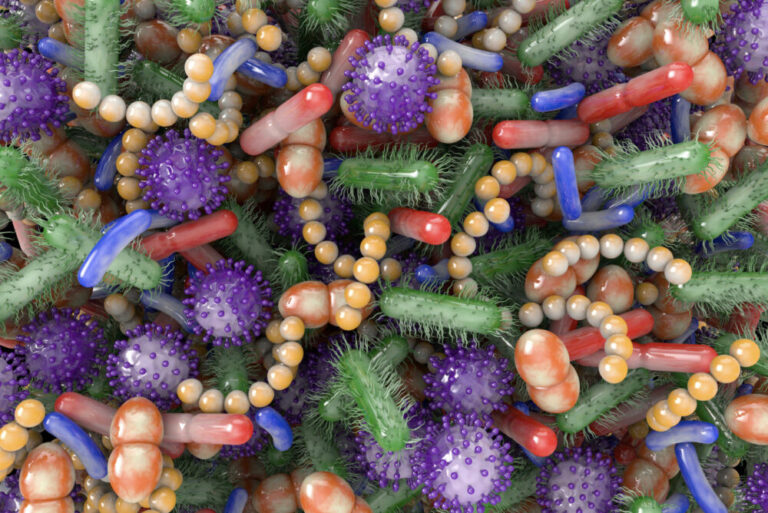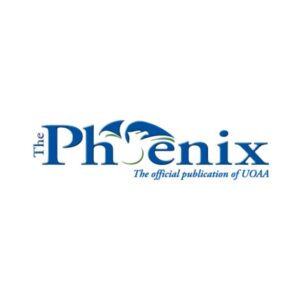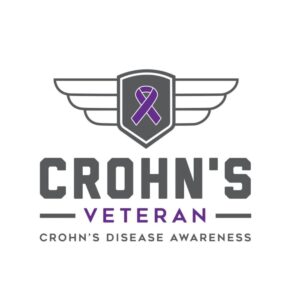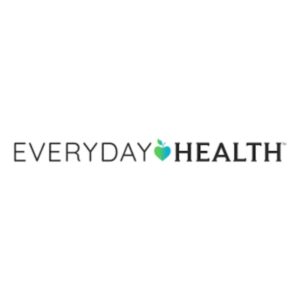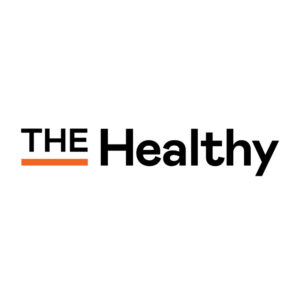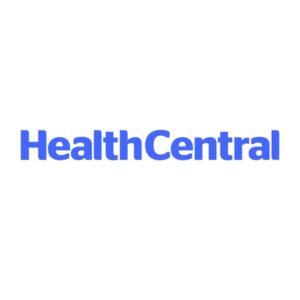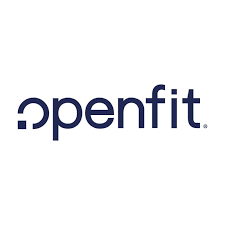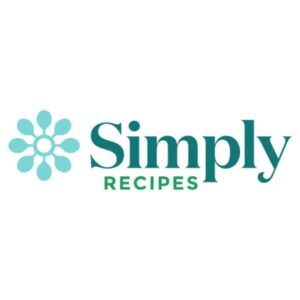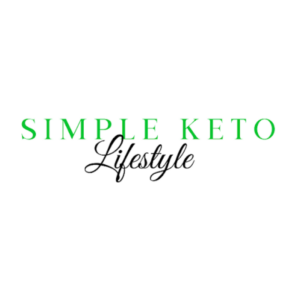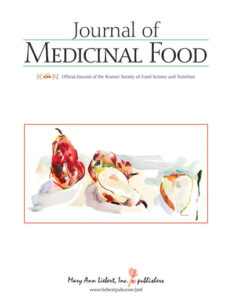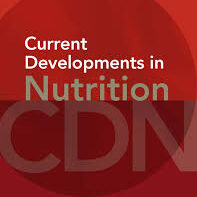New Research Study: the Crohn’s Disease Exclusion Diet induced and maintained remission in adults
Danielle Gaffen, MS, RDN, LD
- Last Updated
Fast Facts about the Study
Title of Publication:
The Crohn’s disease exclusion diet for induction and maintenance of remission in adults with mild-to-moderate Crohn’s disease (CDED-AD): an open-label, pilot, randomised trial
Journal Where Published:
The Lancet Gastroenterology & Hepatology
Publication Date:
November 2021
Purpose of Study:
This study was a clinical trial that evaluated the Crohn’s Disease Exclusion Diet (CD-Exclusion Diet) for adults with Crohn’s disease.
Methods:
For 24 weeks, half of the participants in this study received the CD Exclusion Diet alone, while the other half received both the CD-Exclusion Diet and a liquid nutritional formula.
Results:
At week 6, clinical remission was achieved by:
- 68% of participants in the CD-Exclusion Diet + liquid nutritional formula group
- 57% of participants in the CD-Exclusion Diet alone group.
Out of the participants above who were in remission at week 6, 80% sustained remission through the end of the study.
35% of total participants were in endoscopic remission at the end of the study.
Conclusions:
The CD-Exclusion Diet, with or without a partial liquid nutritional formula, was effective for induction and maintenance of remission in adults with mild-to-moderate Crohn’s disease and might lead to endoscopic remission.
More information about the research publication
Introduction
Research currently suggests that the development of Crohn’s disease involves a combination of environmental and genetic factors that lead to gastrointestinal inflammation and complications. The current goal of medical therapy is to reduce inflammation and bring on the healing of the lining of the digestive tract, which can be achieved by changing the way the immune system cells signal; however, many of the drugs used to manage Crohn’s disease involve suppressing the immune system and have side-effects.
Dietary factors are among the strongest candidates for environmental factors that might drive inflammation. The effect of dietary exposure as an environmental factor is reflected in the high remission rate observed with exclusive enteral nutrition in children with Crohn’s disease.
What is the Crohn’s Disease Exclusion Diet (CD-Exclusion Diet)?
The CD-Exclusion Diet is a new dietary therapy specifically designed for patients with Crohn’s disease that uses whole food with a liquid nutritional formula to achieve remission and reduce inflammation.
The CD-Exclusion Diet can generally be defined as:
- high protein, low animal fat, low heme, low gluten, and low food additive diet, with exposure to fiber
- containing mandatory sources of pectin and resistant starch from fruits and vegetables
- each phase of the diet allows access to a wider range of specified foods
Several studies in children using the CD-Exclusion Diet with a partial liquid nutritional formula have indicated that this approach might be as effective as an exclusively liquid nutritional formula diet:
- but with better compliance
- might reduce C-reactive protein and calprotectin concentrations
- might lead to endoscopic remission
However, no data has been collected for adults.
This study aimed to assess ability and effect of CD-Exclusion Diet on induction and maintenance of clinical remission, endoscopic remission, and compliance in adults with Crohn’s disease. Researchers also aimed to assess whether use of a partial liquid nutrition formula with the CD-Exclusion Diet improved outcomes in adults compared with the CD-Exclusion Diet alone.
Methods
Study Design and Participants
Inclusion Criteria:
Participants were eligible to be included in this study if they:
- were between 18–55 years old
- had established ileal or limited ileocolonic Crohn’s disease
- had maximal disease duration of 5 years
- had clinically defined active disease
Exclusion criteria:
Patients were excluded from the study if they:
- had stricturing
- had deep ulcers involving the distal colon
- had previous intestinal resection
- used of an immunomodulator or changed dose in the previous 8 weeks
- current or past usage of biologics
- used of systemic steroids or more than 3 mg budesonide
- had positive stool cultures
- had stool tests for parasites or C. Dif
- were pregnant or lactating
- were unwilling to consume protein from animal sources
Procedures
Patients were randomly assigned into either:
- CD-Exclusion Diet + partial enteral nutrition (a liquid nutritional formula): (Modulen IBD; Nestle) group
- CD-Exclusion Diet alone group
All participants received the CD-Exclusion Diet for 24 weeks. Additionally, all participants in both groups received 2,000 IU of vitamin D per day.
The CD-Exclusion Diet is divided into three phases:
Phase 1: First 6 weeks
- chicken breast, eggs, and the partial liquid nutritional formula as sources of animal protein
- certain mandatory fruits with some allowed fruits and vegetables
- excluded: wheat and food additives
Phase 2: Weeks 7–12
- the gradual introduction of almost all fruits and vegetables
- restricted amounts of beef and legumes
- one slice of whole grain bread daily
Phase 3: Weeks 13-24
- During weekdays, participants could consume any food from phase 2, all fruits and vegetables, one plain yogurt daily, any fresh fish or seafood once weekly, about 7 ounces of lean beef (such as sirloin steak) and chicken (all parts with the exception of the wings) any day, eggs any day, and specified amounts of legumes.
- On weekends, participants were allowed two home-cooked main meals (no takeout or restaurant food allowed) with any food (including fish, any meat or dairy, and wheat) and a glass of wine or beer and home-cooked breakfasts.
Patients who were assigned to the CD-Exclusion Diet + partial liquid nutritional formula received:
Phase 1: First 6 weeks
- a combination of the CD-Exclusion diet with 1,000 calories worth of liquid nutritional formula daily
Phase 2: Weeks 7-12
- a combination of the CD-Exclusion diet with calcium supplements plus 600 calories worth of liquid nutritional formula
Phase 3: Weeks 13-24
- at week 13, the liquid nutritional formula was no longer required but patients could continue drinking it for 600 calories worth per day, or choose to continue with the CD-Exclusion Diet plus calcium supplements alone until the end of the study.
How Crohn’s disease activity was measured:
- the Harvey– Bradshaw Index
- complete blood count
- C-reactive protein
- albumin
- weight at baseline and weeks 6, 12, and 24
- stool samples for fecal calprotectin were obtained at baseline and at weeks 6 and 12; concentrations of less than 50 μg/g were considered normal
- endoscopic disease activity was assessed using the simplified endoscopic activity score for Crohn’s disease (SES-CD) both at the start of the study for participants with documented colonoscopies and at colonoscopy at week 24
Dietary compliance:
- Dietary compliance was assessed by dietitians, assessed using a 3-day food journal completed by patients at three timepoints (weeks 3, 9, and 18), along with telephone calls at weeks 1, 7, and 13
Results
29 of 40 participants (73%) completed the study:
- two patients did not return for follow-up visits
- six patients discontinued treatment due to worsening of disease
- two stopped because of intolerance to CD-Exclusion Diet
- one patient was admitted to hospital for another condition
At week 6:
- 25 of 40 (63%) patients had achieved clinical remission with no significant differences observed between the treatment groups
- 13 of 19 participants (68%) of the CD-Exclusion Diet + partial liquid nutritional formula group
- 12 of 21 participants (57%) of the CD-Exclusion Diet alone group
At week 12:
- 22 patients (55% of the overall study population, 88% of those in remission at week 6) were in sustained remission
- no significant differences were observed in the proportion of patients in remission at this timepoint in either group
At week 24:
- 20 patients (50% of the overall study population, 80% of those in remission at week 6) were in sustained remission
- the number of patients who had sustained remission in the two groups was not statistically significant
Inflammatory markers:
- C-reactive protein and fecal calprotectin concentrations at weeks 6 and 12 were similar between the treatment groups
Median Harvey– Bradshaw Index scores were not significantly different between groups at any time point.
Among the 30 participants with elevated C-reactive protein at baseline, a decrease in median C-reactive protein was observed, which was sustained at week 24.
Median fecal calprotectin concentrations decreased significantly between baseline and week 12. 40% the participants had a fecal calprotectin concentration of less than 100 μg/g at week 12. No differences were identified between groups in change in fecal calprotectin concentrations at weeks 6 or 12.
Among 22 patients with paired colonoscopies at baseline and week 24, median SES-CD score decreased by 5·0 points.
Weight:
- At enrollment: four patients (two patients per treatment group) were underweight (BMI <18.5) nine patients (six patients in the CD-Exclusion Diet + partial liquid nutritional formula group and three patients in the CD-Exclusion Diet alone group) were overweight (BMI >30)
- Among the 17 patients for whom data on weight was available in the CD-Exclusion Diet + partial liquid nutritional formula group, median weight increased between baseline and week 6
- Among the 15 patients for whom data on weight was available in the CD-Exclusion Diet alone group, median weight remained stable between baseline and week 6
- Both groups gained weight on their respective diets by week 12
- The changes in weight between treatment groups at weeks 6 and 12 were not significantly different
Calories:
- By week 24, patients who received partial liquid nutrition formula had received a significantly greater amount of daily daily calories per day (average 2,221 calories ± 913 calories for the CD-Exclusion diet + partial liquid nutritional formula group vs 1582 calories ± 273 calories for the CD-Exclusion Diet group
- But note that nutritional data for the CD-Exclusion Diet alone group might have been skewed by two patients who were on intentional weight loss diets in this group
Protein:
- Despite numerically lower mean protein consumption with CD-Exclusion Diet alone versus CD-Exclusion Diet + partial liquid nutritional formula group, average protein intake in the CD-Exclusion Diet alone group remained high at 148% of the recommended dietary allowance
Compliance of diet:
- Overall, compliance with dietary therapy at week 6 was high in 63% participants in the CD-Exclusion Diet + partial liquid nutritional formula group and 86% of participants in the CD-Exclusion Diet alone group
Discussion
The researchers asserted that dietary therapy might be ideal for patients with milder disease or as a bridge to medical therapy if there is a delay in instituting medical therapy, and might address the involvement of diet as a trigger of inflammation.
In this pilot study, the researchers demonstrated that dietary therapy (CD-Exclusion Diet with or without a partial liquid nutritional formula) seemed to be effective for induction and maintenance of remission in a group of adults with mild-to-moderate Crohn’s disease:
- About 60% of patients achieved clinical remission by week 6 without additional drugs.
- 80% of patients in remission at week 6 maintained clinical remission at week 24 on solely dietary therapy, allowing more than 50% of patients in the study’s population to achieve sustained remission at 6 months.
- Dietary therapy was accompanied by a significant and progressive reduction in C-reactive protein and fecal calprotectin.
- 35% of the study’s population had achieved endoscopic remission at 24 weeks (this was the first study to explore the effect of dietary intervention on mucosal lining).
- This was also the first study to demonstrate that dietary therapy can achieve these goals in adults without concurrent immunomodulators or steroids. Note that the researchers can’t translate these results to patients who have been treated with biologics since this patient group was not included in this pilot trial.
No significant differences in remission were identified between dietary intervention groups, with more than 50% of participants achieving sustained remission at week 12 in both groups. These data suggest that CD-Exclusion Diet without partial liquid nutritional formulas can be used as an alternative if partial liquid nutrition formula is not tolerated.
Limitations:
This excluded patients:
- older than 60 years
- on steroids
- received biologic treatment
- previously had surgery
Therefore, the researchers were unable to extend the application of the results of this study to patients who receive anti-TNF drugs or those with more severe disease.
Since this was a pilot study, the researchers did not include a control group, as it would have been unethical to treat patients with active disease with a placebo intervention for 6 months.
Given the pilot nature of the study, there were not enough participants for all outcomes and to detect differences between the CD-Exclusion Diet alone or CD-Exclusion Diet + partial liquid nutritional formula groups, or to define who could benefit from the partial liquid nutritional formula.
In summary, this study is the first prospective investigation of using only dietary therapy in adults with active Crohn’s disease, designed and performed using rigorous criteria and an evaluation of mucosal healing, with the aim of meeting the current goals of therapy in Crohn’s disease.
Although this was only a pilot trial, these findings suggest that the Crohn’s Disease Exclusion Diet could be used in adults with uncomplicated mild-to-moderate Crohn’s disease at diagnosis and possibly serve as a therapeutic alternative for patients who cannot receive medical therapy due to underlying health conditions.
Want to chat about nutrition for your Crohn’s disease?
Reference:

